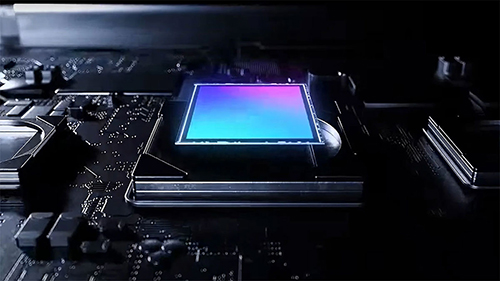As the development of Extended Reality (XR) technology progresses, image sensor technology has become a key force driving innovation in this field. The continuous innovation of image sensors not only makes XR devices more compact and efficient but also brings users an unprecedented immersive experience.
The miniaturization of image sensors has been a significant trend in technological development in recent years. This allows XR devices to integrate more functions while maintaining portability. Despite the reduction in sensor size, their performance has not been affected; instead, there has been a noticeable improvement in resolution, dynamic range, and performance in low-light environments.
Application of image sensor
For instance, Apple's Vision Pro showcases the advanced application of image sensors in XR devices. This device is equipped with 14 cameras, including the main camera, bottom, side, and infrared cameras, among others. Through the collaborative work of these cameras, Vision Pro can capture every detail of the environment, achieving precise tracking and positioning. The design of this multi-camera system not only enhances the device's practicality but also greatly enhances the user's sense of immersion.

Development of image sensor technology
However, the application of image sensor technology is not limited to high-end products. Devices such as Pico Neo 3, Pico 4, and Meta's Quest also employ advanced image sensor technology, such as the OmniVision OVM7251 global shutter sensor for tracking and positioning. This small-sized sensor, although limited in resolution, can achieve high frame rate video recording, which is particularly effective for capturing motion images. OmniVision's successor, the OG0VE, goes a step further; it not only has a smaller packaging size but also improves energy efficiency by 50%, supporting higher frame rate transmission.
Samsung's ISOCELL Vizion 931 is another eye-catching global shutter sensor, offering a smaller size and more efficient light conversion efficiency for XR devices with its VGA resolution and 1:1 design, especially suitable for visual applications such as iris recognition, eye tracking, and facial and gesture recognition.

Although global shutter technology still needs improvement in some aspects, its potential in providing distortion-free image capture is enormous. As the technology continues to mature, we have reason to believe that future XR devices will achieve greater breakthroughs in image quality, cost, and performance.
In addition, curved sensor technology also brings new possibilities for the optical design of XR devices. The French startup SILINA released a bendable image sensor design technology, bringing new possibilities for the optical design of XR devices. This design eliminates the need for correcting lens field curvature, simplifying the design of the optical module, and is expected to further reduce the size of XR devices. Although this technology is still addressing issues of reliability and cost, its future application prospects are broad.
Future Outlook
The innovation of image sensor technology not only promotes the development of XR devices but also brings users a richer and more immersive experience. As technology continues to evolve, the progress of image sensor technology will play a crucial role. Future XR devices will integrate more powerful cameras and adopt more advanced image sensor technology to provide higher quality imaging and more precise tracking. With continuous technological innovation and market maturity, we will usher in an era of more diverse and advanced XR devices.
Recommended IC Models
In conclusion, we would like to recommend a selection of high-performance and efficient Integrated Circuit (IC) models that have been trending lately. These products can be found at Conevo Electronics.
● ADM2483BRWZ: This high-performance digital isolator from ADI is favored for its low power consumption and enhanced interference resistance. It ensures the accuracy and reliability of data transmission while reducing interference during system start-up and shutdown, and preventing damage caused by overheating. This isolator is widely used in electronic devices that require high-speed and high-isolation, such as building control networks and multi-point data transmission systems.
● RTL8152B-VB-CG: This USB 2.0 to 10/100M network chip launched by REALTEK has a high level of integration and employs the most advanced DSP technology and mixed-signal technology, capable of providing high-speed transmission through cables. It is mainly used in devices such as USB 10/100M Ethernet motherboards, electronic dogs, notebooks, and expansion dock expansion ports.
● MC33078DR2G: Manufactured by ON Semiconductor, this dual-channel, high-performance operational amplifier chip uses bipolar technology and is designed as a high-quality monolithic amplifier with high-performance features suitable for amplifying and processing voltage signals. The MC33078DR2G is commonly used in applications requiring high-quality signal amplification, such as audio amplifiers, signal conditioning circuits, and precision instruments, and is also widely used in audio amplification, filtering, signal processing, control systems, and general amplification applications.
Website: www.conevoelec.com
Email: info@conevoelec.com








